Rehabilitation of Ankle Injuries in Football
The ankle is one of the most common sites of injury in football, with a large percentage of those suffering an initial injury likely to have a recurrence. There remains a lot of debate regarding the best way of managing these injuries, along with the most effective testing methods that lead to minimising injury recurrence once a player has returned to training and competition.
In the majority of cases these are minor ligament injuries with/without additional minor associated soft-tissue injuries that inevitably heal when sufficient rest is permitted. In some cases though, associated injuries are those which need to be identified early to prevent significant problems developing either during rehab or later on in a player’s career.

The ligaments most commonly injured are the three on the lateral (outer) aspect of the ankle: the anterotalofibular ligament (ATFL), the calcaneofibular ligament (CFL), and the posteriotalofibular ligament (PTFL). The anatomy of the ankle and foot however is much more complex than this, and in the majority of instances there are several pathologies to identify with any given injury. Ensuring nothing goes undiagnosed is imperative when aiming to maximise a safe return to play to occur. I see many people in clinic that have had an x-ray soon after injury and have been advised ‘there’s no break it’s just ligaments’. On getting this advice most people presume such injuries will heal on their own and do not need targeted rehab. It is essential to understand the exact structures it is that you have damaged. If you don’t know which ligaments you have damaged how do you know if you are ok to walk away from accident and emergency without crutches or should you in fact have some? Do you need to immobilise the ankle as a result of the ligament injury? Is it safe to put weight on your ankle? Do you need any follow-up with someone else? There are certain signs and symptoms that an experienced and suitably qualified practitioner will identify that others might not. A quick case in point is what is commonly termed a ‘high ankle sprain’. This is an injury to a ligament that is crucial for the stability of your ankle and if you are not correctly diagnosed and kept non-weightbearing, you may potentially cause more damage which then leads to a higher risk of ankle osteoarthritis.
It is IMPERATIVE that you seek specialist advice for these injuries as soon as you can. Presuming ‘it’s just a ligament injury and there’s no break’ completely ignores the fact that these are still important injuries and provide significant risk to your long-term health if something is missed.
Once an accurate diagnosis is made, you will then need to ensure you have a specific and bespoke rehab programme. In addition to this, you should ensure that there is a comprehensive return to play testing protocol in place to maximise your chances of a successful return to playing. These should incorporate a variety of tests for range of motion, balance/proprioception, as well as multiplanar assessments of stability and force production. These tests should then allow for symmetrical comparisons to be made between injured/uninjured sides, with a maximum 10% difference between each side widely considered to be an acceptable boundary.

Andy Renshaw kindly supplied FMPA with the above article.
Andy was previously the Head of Physiotherapy for Liverpool Football Club and has 16yrs full-time experience of working in Premier League Football.
Andy is now a Consultant Physiotherapist at Harris and Ross Wilmslow and heads the Football Rehabilitation Department, offering professional rehabilitation services to support clubs at all levels and for players of all ages.
Andy Renshaw is listed on the FMPA Register and his full profile and contact details can be viewed here.
